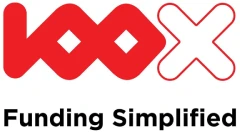Following will help to quantify and determine the best loan CRM software:
| Criterion |
Pros |
Cons |
Scoring Process |
| Functionality |
Comprehensive features that cover all aspects of loan CRM |
May include unnecessary features that complicate usage |
Rate the relevance of features (1-10) |
| Cost |
Competitive pricing with good ROI |
High upfront and ongoing costs |
Calculate total cost of ownership over 5 years |
| Scalability |
Can grow with your business needs |
May require significant upgrades for scaling |
Rate scalability options (1-10) |
| User-friendliness |
Intuitive interface and ease of use |
Steep learning curve for new users |
Conduct user tests and rate usability (1-10) |
| Integration |
Seamless integration with existing systems |
Limited integration options |
Count the number of essential integrations supported |
| Customization |
Highly customizable to fit specific business processes |
Customizations can be complex and costly |
Rate customization flexibility (1-10) |
| Support and Training |
Comprehensive support and training resources |
Limited or costly support services |
Rate the quality of support and training (1-10) |
| Security |
Strong data protection and compliance features |
Potential vulnerabilities in software security |
Rate security features and compliance (1-10) |
| Deployment Time |
Quick setup and deployment |
Long deployment time with potential delays |
Estimate deployment time in weeks/months |
| ROI and Performance |
Demonstrable ROI through efficiency gains and sales growth |
Difficult to measure exact ROI and performance impact |
Calculate expected ROI percentage over 1-3 years |
How to decide the Return on Investment (RoI) of a Loan CRM Software?
The Return on Investment (ROI) of a Loan CRM Software involves calculating the financial gains or losses generated by the software relative to its cost. To accurately assess the ROI, you need to consider both tangible and intangible benefits the software provides, in addition to its total cost of ownership. Here’s a structured approach to calculate ROI:
1. Calculate the Total Cost of Ownership (TCO)
First, sum up all costs associated with the CRM software over a specific period, typically over one to three years. These costs include:
- Initial Costs: Software purchase or subscription fees, implementation fees, and any hardware or additional software required.
- Ongoing Costs: Annual or monthly subscription fees (for SaaS models), maintenance, support, and training costs.
- Upgrade Costs: Any expected costs for upgrading the software or purchasing additional modules or services.
2. Quantify the Benefits
Next, identify and quantify the benefits the CRM software brings to your organization. These benefits can be direct (quantifiable financial gains) and indirect (qualitative improvements that contribute to financial performance over time).
3. Direct Benefits:
- Increased revenue from higher conversion rates or cross-selling.
- Reduced operational costs through automation and efficiency gains.
- Lower customer acquisition and retention costs.
4. Indirect Benefits:
- Improved customer satisfaction and loyalty.
- Enhanced decision-making from better data analytics and reporting.
- Increased employee satisfaction and productivity.
5. Consider the Time Value of Money
For a more sophisticated analysis, you might want to consider the time value of money (TVM). This involves discounting future cash flows back to their present value to account for the fact that money available now is worth more than the same amount in the future because of its potential earning capacity. This approach is more complex and often involves using financial software or a financial analyst.
6. Monitor Post-Implementation Performance
After implementation, continuously monitor the CRM’s performance against the expected ROI. This helps in understanding if the investment is paying off as expected and allows for adjustments in strategy or usage of the CRM software.




